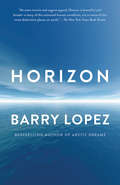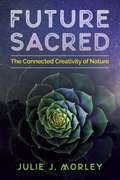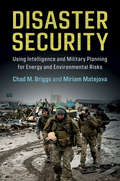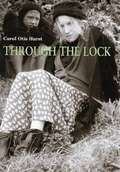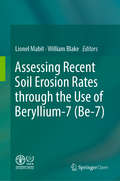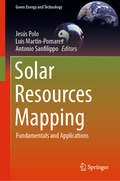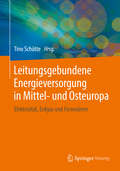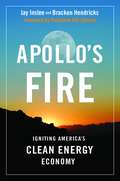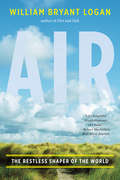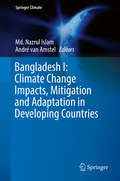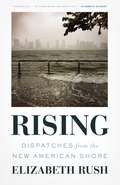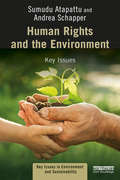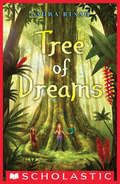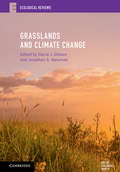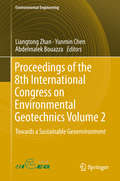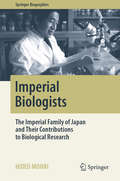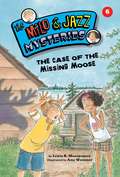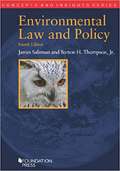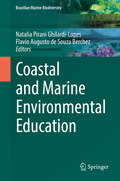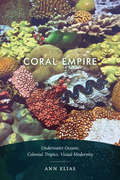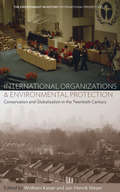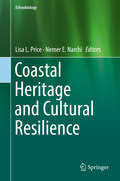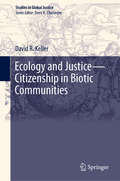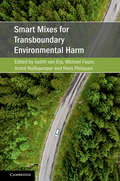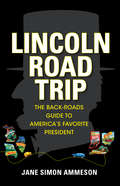- Table View
- List View
Horizon
by Barry LopezFrom the National Book Award-winning writer, humanitarian, environmentalist and author of the now-classic Arctic Dreams: a vivid, poetic, capacious work that recollects the travels around the world and the encounters--human, animal, and natural--that have shaped his extraordinary life. Poignantly, powerfully, it also asks "How do we move forward?"Taking us nearly from pole to pole--from modern megacities to some of the most remote regions on the earth--Barry Lopez, hailed by the Los Angeles Times Book Review as "one of our finest writers," gives us his most far-ranging yet personal work to date, in a book that moves through decades of his life as it describes his travels to six regions of the world: from the Oregon coast where he lives to the northernmost reaches of Canada; to the Galapagos; to the Kenyan desert; to Botany Bay in Australia; and in the resounding last section of this magisterial book, unforgettably to the ice shelves of Antarctica. As he revisits his growing up and these myriad travels, Lopez also probes the long history of humanity's quests and explorations, including the prehistoric peoples who trekked across Skraeling Island in northern Canada; the colonialists who plundered Central Africa; an Enlightenment-era Englishman who sailed the Pacific and a Native American emissary who arrived in Japan before it opened to the West. He confronts today's ecotourism in the tropics and visits the haunting remnants of a French colonial prison on Île du Diable in French Guiana. Through these journeys, and friendships forged along the way with scientists, archeologists, artists and local residents, Lopez searches for meaning and purpose in a broken world. With tenderness and intimacy, Horizon evokes the stillness and the silence of the hottest, the coldest and the most desolate places on the globe. It speaks with beauty and urgency to the invisible ties that unite us; voices concern and frustration alongside humanity and hope; and looks forward to our shared future as much as it looks back at a single life. Revelatory, powerful, profound, this is an epic work of nonfiction that makes you see the world differently: a crowning achievement by one of our most humane voices--one needed now more than ever.
Future Sacred: The Connected Creativity of Nature
by Glenn Aparicio Parry Julie J. MorleyReveals how our survival depends on embracing complexity consciousness and relating to nature and all life as sacred • Rejects the “survival of the fittest” narrative in favor of sacred symbiosis, creative cooperation, interdependence and complex thinking • Provides examples from complexity studies, cultural history, philosophy, indigenous spirituality, biomimicry, and ecology to show how nature’s intelligence and creativity abound everywhere • Documents how indigenous cultures lived in relative harmony with nature because they perceived themselves as part of the “ordered whole” of all life In Future Sacred, Julie J. Morley offers a new perspective on the human connection to the cosmos by unveiling the connected creativity and sacred intelligence of nature. She rejects the “survival of the fittest” narrative--the idea that survival requires strife--and offers symbiosis and cooperation as nature’s path forward. She shows how an increasingly complex world demands increasingly complex consciousness. Our survival depends upon embracing “complexity consciousness,” understanding ourselves as part of nature, as well as relating to nature as sacred. Morley begins by documenting how indigenous cultures lived in relative harmony with nature because they perceived themselves as part of the “ordered whole” of all life--until modernity introduced dualistic thinking, thus separating mind from matter, and humans from nature. The author deconstructs the fallacy behind social and neo-Darwinism and the materialist theories of “dead matter” versus those that offer a connection with the sentient mind of nature. She presents evidence from complexity studies, cultural history, philosophy, indigenous spirituality, biomimicry, and ecology, highlighting the idea that nature’s intelligence and creativity abound everywhere--from cells to cetaceans, from hydrogen to humans, from sunflowers to solar panels--and that all sentient beings contribute to the evolution of life as a whole, working together in sacred symbiosis. Morley concludes that our sacred future depends on compassionately understanding and integrating multiple intelligences, seeing relationships and interdependence as fundamental and sacred, as well as honoring the experiences of all sentient beings. Instead of “mastery over nature,” we must shift toward synergy with nature--and with each other as diverse expressions of nature’s creativity.
Disaster Security: Using Intelligence and Military Planning for Energy and Environmental Risks
by Chad M. Briggs Miriam MatejovaThis book is for a broad audience of practitioners, policymakers, scholars, and anyone interested in scenarios, simulations, and disaster planning. Readers are led through several different planning scenarios that have been developed over several years under the auspices of the US Department of Energy, the US Air Force, and continued work at GlobalInt LLC. These scenarios present different security challenges and their potential cascading impacts on global systems - from the melting of glaciers in the Andes, to hurricanes in New York and Hawaii, and on to hybrid disasters, cyberoperations and geoengineering. The book provides a concise and up-to-date overview of the 'lessons learned', with a focus on innovative solutions to the world's pressing energy and environmental security challenges.
Through the Lock
by Carol Otis HurstEtta, a twelve-year-old orphan in nineteenth- century Connecticut, meets a boy living in an abandoned cabin on the New Haven and Northampton Canal and has adventures with him while trying to be reunited with her siblings. A ward of the state of Massachusetts in 1840, Etta has escaped the last in a string of foster homes in search of a place where she can live with her brother and sister as a family. Freezing and hungry, she takes refuge in a shack along the New Haven and Northampton Canal. In it she meets Walter, a boy who is also trying to make a home and a life for himself. As soon as Walter agrees to take her in, Etta begins scheming to invite her siblings to join them as well. But before she can reunite her family, Etta must overcome the more immediate challenges she and Walter face. Together with a boy named Jake, these independent and enterprising young people must find a more suitable home for themselves, convince the canal company to hire them, and catch the vandals who are determined to sabotage the canal.
Assessing Recent Soil Erosion Rates through the Use of Beryllium-7 (Be-7)
by Lionel Mabit William BlakeThis open access book is the first comprehensive guideline for the beryllium-7 (Be-7) technique that can be applied to evaluate short-term patterns and budgets of soil redistribution in agricultural landscapes. While covering the fundamental and basic concepts of the approach, this book distinguishes itself from other publications by offering step-by-step instructions on how to use this isotopic technique effectively. It covers experimental design considerations and clear instruction is given on data processing. As accurate laboratory measurement is crucial to ensure successful use of Be-7 to investigate soil erosion, a full chapter is devoted to its specific determination by gamma spectrometry. This open access contribution further describes new developments in the Be-7 technique and includes a concluding chapter highlighting its potential benefits to support the implementation of area-wide soil conservation policy.
Solar Resources Mapping: Fundamentals and Applications (Green Energy and Technology)
by Jesús Polo Luis Martín-Pomares Antonio SanfilippoThis book presents methods for optimising the spatial and network configuration of solar radiation measuring stations. Various physical and mathematical models are demonstrated, which together with high quality measurements, provide the essential tools to generate and validate solar resource estimates to improve the mapping of solar resources.Each chapter deals with a specific topic, showing its methodology, and providing examples of how to apply these techniques with reference to current projects around the world. These topics include:· Radiometric measurement campaigns;· Equipment calibration, installation, operation, and maintenance;· Data quality assurance and assessment;· Solar radiation modelling from satellite images and numerical models;· Downscaling and kriging interpolation of solar radiation;· Simulation of electric solar power plant generation;· Solar radiation forecasting;· Applications of solar energy; and· Socio-economic benefits of solar energy.The contributors present the statistical and physical models needed to derive solar radiation from satellite images and numerical models, emphasising the importance of measuring solar radiation accurately. They also show the classical models used to generate synthetic data, clear sky models and ancillary air quality and meteorological data from different input sources.Solar Resources Mapping provides industry professionals with methodologies and tools to build solar irradiance maps for different applications. The book will also benefit students and researchers as it serves as a main technical reference, presenting the basic terminology and fundamentals for solar resource mapping that include methods for assessing measurement uncertainty.
Leitungsgebundene Energieversorgung in Mittel- und Osteuropa: Elektrizität, Erdgas und Fernwärme
by Tino Schütte Emil Dvorský Olga Borozdina Arvydas Galinis Géza Mészáros Vaclovas Miškinis Edyta Ropuszyńska-Surma Gunta Šlihta Kaspars Šlihta Andrea Simon Kvetoslava Šoltésová Jaroslav Šoltés Zdzisław Szalbierz Magdalena Węglarz Lenka Raková Martin SirovýEine funktionierende leitungsgebundene Energieversorgung ist Voraussetzung für die industrielle Entwicklung eines Landes. Das Buch gibt einen fundierten Überblick über die Strom-, Gas- und Fernwärmeversorgungssysteme in den Ländern der Visegrad-Gruppe, des Baltikums sowie Russlands, Belarus und der Ukraine. Gleichzeitig werden Ansatzpunkte zur Modernisierung der Energienetze offengelegt. Nationale Besonderheiten und Entwicklungsstände werden aufgezeigt. Durch die abgestimmte Struktur der Beiträge ist ein Vergleich der Systeme möglich. Die Länderberichte sind von ausgewiesenen Fachleuten der betreffenden Staaten verfasst. Sie spiegeln die seit 25 Jahren bestehende Zusammenarbeit im Rahmen des Zittauer Energieseminars zur energiewirtschaftlichen Situation in Mittel- und Osteuropa wider. Jeder Beitrag beinhaltet eine technisch-ökonomische Sachstandsanalyse und geht auf Entwicklungsperspektiven ein. Das Werk zeigt Verbesserungspotentiale bzgl. Infrastrukturausbau und Energieeffizienz auf.
Apollo's Fire: Igniting America's Clean Energy Economy
by Bracken Hendricks Jay InsleeIn 1961, President John F. Kennedy ignited America's Apollo Project and sparked a revolution in space exploration. Today the New Apollo Energy Project is poised to revolutionize the production of energy and thereby save our planet. The nation that built the world's most powerful rockets, its most advanced computers, and its most sophisticated life support systems is ready to create the world's most powerful solar energy systems, its most advanced wind energy turbines, and its most sophisticated hybrid cars. This will result in nothing less than a second American Revolution. Who are the dreamers in California who believe they can use mirrors and liquid metal to wring more electricity from a ray of sunshine than anyone else on earth can? Who are the innovators who have built a contraption that can turn the energy of a simple wave off the Oregon coast into burnt toast in Idaho? Who are the scientists in Massachusetts who have invented a battery that now runs your hand drill and will soon run your car? Readers will meet them all in this book. They will learn how the new energy economy will grow, the research that is required, and the legislation that must be passed to make the vision a reality. This is a thoughtful, optimistic book, based on sound facts. No one before has tied together the concepts of economic growth and greenhouse gas reductions with such concrete examples. No one has previously told the real stories of the people who are right now on the front lines of the energy revolution. The co-authors, one a U.S. Congressman who is the primary sponsor of the New Apollo Energy Act, and the other the founder of the Apollo Alliance, have joined their experience, expertise, and passion for a clean energy future to lay out the path to stop global warming and gain energy independence.
Air: The Restless Shaper of the World
by William Bryant LoganThe author of Dirt and Oak brings to life this quickest, most sustaining, most communicative element of the earth. Air sustains the living. Every creature breathes to live, exchanging and changing the atmosphere. Water and dust spin and rise, make clouds and fall again, fertilizing the dirt. Twenty thousand fungal spores and half a million bacteria travel in a square foot of summer air. The chemical sense of aphids, the ultraviolet sight of swifts, a newborn's awareness of its mother's breast--all take place in the medium of air. Ignorance of the air is costly. The artist Eva Hesse died of inhaling her fiberglass medium. Thousands were sickened after 9/11 by supposedly "safe" air. The African Sahel suffers drought in part because we fill the air with industrial dusts. With the passionate narrative style and wide-ranging erudition that have made William Bryant Logan's work a touchstone for nature lovers and environmentalists, Air is--like the contents of a bag of seaborne dust that Darwin collected aboard the Beagle--a treasure trove of discovery.
Bangladesh I: Climate Change Impacts, Mitigation, and Adaptation in Developing Countries (Springer Climate)
by André Van Amstel Md. Nazrul IslamThe aim of this book is to provide information to scientists and local government to help them better understand the particularities of the local climate. Climate change is one of the biggest challenges to society. It can lead to serious impacts on production, life and environment on a global scale. Higher temperatures and sea level rise will cause flooding and water salinity problems which bring about negative effects on agriculture and high risks to industry and socio-economic systems in the future. Climate change leads to many changes in global development and security, especially energy, water, food, society, job, diplomacy, culture, economy and trade. The Intergovernmental Panel on Climate Change (IPCC) defines climate change as: “Any change in climate over time, whether due to natural variability or as a result of human activity.” Global climate change has emerged as a key issue in both political and economic arenas. It is an increasingly questioned phenomenon, and progressive national governments around the world have started taking action to respond to these environmental concerns.
Rising: Dispatches from the New American Shore
by Elizabeth RushHailed as “deeply felt” (New York Times), “a revelation” (Pacific Standard), and “the book on climate change and sea levels that was missing” (Chicago Tribune), Rising is both a highly original work of lyric reportage and a haunting meditation on how to let go of the places we love. <P><P>With every passing day, and every record-breaking hurricane, it grows clearer that climate change is neither imagined nor distant―and that rising seas are transforming the coastline of the United States in irrevocable ways. In Rising, Elizabeth Rush guides readers through some of the places where this change has been most dramatic, from the Gulf Coast to Miami, and from New York City to the Bay Area. For many of the plants, animals, and humans in these places, the options are stark: retreat or perish in place. <P><P>Weaving firsthand testimonials from those facing this choice―a Staten Islander who lost her father during Sandy, the remaining holdouts of a Native American community on a drowning Isle de Jean Charles, a neighborhood in Pensacola settled by escaped slaves hundreds of years ago―with profiles of wildlife biologists, activists, and other members of these vulnerable communities, Rising privileges the voices of those too often kept at the margins.
Human Rights and the Environment: Key Issues (Key Issues in Environment and Sustainability)
by Sumudu Atapattu Andrea SchapperThe field of human rights and the environment has grown phenomenally during the last few years and this textbook will be one of the first to encourage students to think critically about how many environmental issues lead to a violation of existing rights. Taking a socio-legal approach, this book will provide a good understanding of both human rights and environmental issues, as well as the limitations of each regime, and will explore the ways in which human rights law and institutions can be used to obtain relief for the victims of environmental degradation or of adverse effects of environmental policies. In addition, it will place an emphasis on climate change and climate policies to highlight the pros and cons of using a human rights framework and to underscore its importance in the context of climate change. As well as identifying emerging issues and areas for further research, each chapter will be rich in pedagogical features, including web links to further research and discussion questions for beyond the classroom. Combining their specialisms in law and politics, Atapattu and Schapper have developed a truly inter-disciplinary resource that will be essential for students of human rights, environmental studies, international law, international relations, politics, and philosophy.
Tree of Dreams (Scholastic Press Novels Ser.)
by Laura ResauDear Coco and Leo,I miss you! We all miss you! The whole forest misses you! I hear their thanks and wishes in my dreams. I hope you do, too. Prepare for a journey into a world filled with what so many crave -- the sweet savoring of a chocolate drop. A drop that can melt even the most troubled realities. But in this nuanced, heartrending story, before good can emerge, there is destruction, the bombarding of a people, their culture, heritage, sacred beliefs, and the very soul that drives their traditions. This urgent, beautiful novel takes readers into the ugly realities that surround the destruction of the Amazon rain forest and its people. Acclaimed author Laura Resau shows us that love is more powerful than hatred, and that by working together, hope can be magically restored, root and branch.
Grasslands and Climate Change (Ecological Reviews)
by David J. Gibson Jonathan A. NewmanGrasslands are the most extensive terrestrial biome on Earth and are critically important for forage, biodiversity, and ecosystem services. This book brings together an international team of researchers to review scientific knowledge of the effects of climate change on world grasslands, a process we are only just starting to understand. Part I assesses how climate change will impact on the distribution of grasslands, as well as production, biogeochemical cycling and ecosystem services. Part II considers the consequences for the spread of invasive species, demographic change, trophic-level relationships, soil biota, and evolutionary change within grassland biodiversity. Part III proposes how ecologists can respond to climate change effects, focusing on grazing systems, cultural ecology, range management, and restoration. The concluding chapter sets grasslands in the context of the Anthropocene era and identifies the vital research and conservation needs for grassland ecosystems to remain environmentally sustainable under climate change.
Proceedings of the 8th International Congress on Environmental Geotechnics Volume 2: Towards a Sustainable Geoenvironment (Environmental Science and Engineering)
by Liangtong Zhan Yunmin Chen Abdelmalek BouazzaThis is the third volume of the proceedings of the 8th International Congress on Environmental Geotechnics (ICEG 2018), held on October 28 - November 1, 2018 in Hangzhou, China. The theme of the congress is “Towards a Sustainable Geoenvironment”, which means meeting the needs of the present generation without compromising the ability of future generations to meet their own needs. Under this theme, the congress covers a broad range of topics and provides an excellent opportunity for academics, engineers, scientists, government officials, regulators, and planners to present, discuss and exchange notes on the latest advances and developments in the research and application of environmental geotechnics.
Imperial Biologists: The Imperial Family of Japan and Their Contributions to Biological Research (Springer Biographies)
by Hideo MohriThis book sheds light on a little-known aspect of the Imperial family of Japan: For three generations, members of the family have devoted themselves to biological research. Emperor Showa (Hirohito) was an expert on hydrozoans and slime molds. His son, Emperor Akihito, is an ichthyologist specializing in gobioid fishes, and his research is highly respected in the field. Prince Akishino, Emperor Akihito’s son, is known for his research on giant catfish and the domestication of fowl, while Prince Hitachi, Emperor Akihito’s brother, has conducted research on cancer in animals.The book shows how they became interested in biology, how seriously they were committed to their research, what their main scientific contributions are, and how their achievements are valued by experts at home and abroad.To commemorate the 60-year reign of Emperor Showa and his longtime devotion to biology, the International Prize for Biology was founded in 1985. The prize seeks to recognize and encourage researches in basic biology. A list of winners and a summary of their research are presented in the last part of the book.The author, an eminent biologist who has given lectures to the Imperial Family, explains their research and tells the fascinating story of biology and the Imperial Family of Japan. The book is a valuable resource, not only for biology students and researchers, but also for historians and anyone interested in science and the Royal and Imperial families.
Environmental Law and Policy (Concepts and Insights)
by James Salzman Barton H. ThompsonEnvironmental Law and Policy is a user-friendly, concise, inexpensive treatment of environmental law. Written to be read pleasurably rather than used as a dry reference source, the authors provide a broad conceptual overview of environmental law while also explaining the major statutes and cases. A series of problem exercises have been added throughout the book, describing a legal or policy conflict in detail and asking students to identify and assess solutions. The first part of the book provides an engaging discussion of the major themes and issues that cross-cut environmental law. The second part of the book examines the substance of environmental law, with separate sections on each of the major statutes. The third part of the book describes natural resources law, discussing endangered species conservation, wetlands protection, water and energy issues. Part four addresses environmental impact statements and the National Environmental Policy Act.
Coastal and Marine Environmental Education (Brazilian Marine Biodiversity)
by Natalia Pirani Ghilardi-Lopes Flavio Augusto BerchezThis book provides a broad overview of how the promotion of ocean and coastal literacy is being planned, applied and evaluated in Brazil, a country of continental dimensions with a great diversity of cultural, educational and social realities. It discusses a range of target groups, from children to adults; formal and informal strategies; and various promoting players, such as groups/institutions. Researchers representing Brazilian academic institutions and NGOs share their environmental education (EE) experiences in Brazil and describe the main concerns regarding the marine and coastal environments as well as how they are addressing these concerns in their EE projects. This book is of interest to anyone who is looking for ways of designing and implementing EE activities with a robust theoretical background in different socio-cultural scenarios.
Coral Empire: Underwater Oceans, Colonial Tropics, Visual Modernity
by Ann EliasFrom vividly colored underwater photographs of Australia's Great Barrier Reef to life-size dioramas re-creating coral reefs and the bounty of life they sustained, the work of early twentieth-century explorers and photographers fed the public's fascination with reefs. In the 1920s John Ernest Williamson in the Bahamas and Frank Hurley in Australia produced mass-circulated and often highly staged photographs and films that cast corals as industrious, colonizing creatures, and the undersea as a virgin, unexplored, and fantastical territory. In Coral Empire Ann Elias traces the visual and social history of Williamson and Hurley and how their modern media spectacles yoked the tropics and coral reefs to colonialism, racism, and the human domination of nature. Using the labor and knowledge of indigenous peoples while exoticizing and racializing them as inferior Others, Williamson and Hurley sustained colonial fantasies about people of color and the environment as endless resources to be plundered. As Elias demonstrates, their reckless treatment of the sea prefigured attitudes that caused the environmental crises that the oceans and reefs now face.
International Organizations and Environmental Protection: Conservation and Globalization in the Twentieth Century (Environment in History: International Perspectives #11)
by Jan-Henrik Meyer Wolfram KaiserPollution, resource depletion, habitat management, and climate change are all issues that necessarily transcend national boundaries. Accordingly, they and other environmental concerns have been a particular focus for international organizations from before the First World War to the present day. This volume is the first to comprehensively explore the environmental activities of professional communities, NGOs, regional bodies, the United Nations, and other international organizations during the twentieth century. It follows their efforts to shape debates about environmental degradation, develop binding intergovernmental commitments, and-following the seminal 1972 Conference on the Human Environment-implement and enforce actual international policies.
Coastal Heritage and Cultural Resilience (Ethnobiology)
by Nemer E. Narchi Lisa L. PriceThis book explores the knowledge, work and life of Pacific coastal populations from the Pacific Northwest to Panama. Center stage in this volume is the knowledge people acquire on coastal and marine ecosystems. Material and aesthetic benefits from interacting with the environment contribute to the ongoing building of coastal cultures. The contributors are particularly interested in how local knowledge -either recently generated or transmitted along generations- interfaces with science, conservation, policy and artistic expression. Their observations exhibit a wide array of outcomes ranging from resource and human exploitation to the magnification of cultural resilience and coastal heritage. The interdisciplinary nature of ethnobiology allows the chapter authors to have a broad range of freedom when examining their subject matter. They build a multifaceted understanding of coastal heritage through the different lenses offered by the humanities, social sciences, oceanography, fisheries and conservation science and, not surprisingly, the arts. Coastal Heritage and Cultural Resilience establishes an intimate bond between coastal communities and the audience in a time when resilience of coastal life needs to be celebrated and fortified.
Ecology and Justice—Citizenship in Biotic Communities (Studies in Global Justice #19)
by David R. KellerThis is the first book to outline a basic philosophy of ecology using the standard categories of academic philosophy: metaphysics, axiology, epistemology, aesthetics, ethics, and political philosophy. The problems of global justice invariably involve ecological factors. Yet the science of ecology is itself imbued with philosophical questions. Therefore, studies in ecological justice, the sub-discipline of global justice that relates to the interaction of human and natural systems, should be preceded by the study of the philosophy of ecology. This book enables the reader to access a philosophy of ecology and shows how this philosophy is inherently normative and provides tools for securing ecological justice. The moral philosophy of ecology directly addresses the root cause of ecological and environmental injustice: the violation of fundamental human rights caused by the inequitable distribution of the benefits (economies) and costs (diseconomies) of industrialism. Philosophy of ecology thus has implications for human rights, pollution, poverty, unequal access to resources, sustainability, consumerism, land use, biodiversity, industrialization, energy policy, and other issues of social and global justice. This book offers an historical and interdisciplinary exegesis. The analysis is situated in the context of the Western intellectual tradition, and includes great thinkers in the history of ecological thinking in the West from the natural sciences, social sciences and humanities. Keller asks the big questions and surveys answers with remarkable detail. Here is an insightful analysis of contemporary, classical, and ancient thought, alike in the ecological sciences, the humanities, and economics, the roots and fruits of our concepts of nature and of being in the world. Keller is unexcelled in bridging the is/ought gap, bridging nature and culture, and in celebrating the richness of life, its pattern, process, and creativity on our wonderland Earth. Holmes Rolston, III University Distinguished Professor, Colorado State UniversityAuthor of A New Environmental Ethics: The Next Millennium for Life on Earth (2012) Mentored by renowned ecologist Frank Golley and renowned philosopher Frederick Ferré, David Keller is well prepared to provide a deep history and a sweeping synthesis of the "idea of ecology"—including the metaphysical, epistemological, and ethical aspects of that idea, as well as the scientific. J. Baird Callicott University Distinguished Research Professor, University of North TexasAuthor of Thinking Like a Planet: The Land Ethic and the Earth Ethic (2013)
Smart Mixes for Transboundary Environmental Harm (Cambridge Studies on Environment, Energy and Natural Resources Governance)
by Judith Van Erp Michael Faure André Nollkaemper Niels PhilipsenThis work offers a multidisciplinary approach to legal and policy instruments used to prevent and remedy global environmental challenges. It provides a theoretical overview of a variety of instruments, making distinctions between levels of governance (treaties, domestic law), types of instruments (market-based instruments, regulation, and liability rules), and between government regulation and private or self-regulation. The book's central focus is an examination of the use of mixes between different types of regulatory and policy instruments and different levels of governance, notably in climate change, marine oil pollution, forestry, and fisheries. The authors examine how, in practice, mixes of instruments have often been developed. This book should be read by anyone interested in understanding how interactions between different instruments affect the protection of environmental resources.
Lincoln Road Trip: The Back-Roads Guide to America’s Favorite President
by Jane Simon AmmesonAmerica's favorite president sure got around. From his time as a child in Kentucky, as a lawyer in Illinois, and all the way to the Oval Office, Abraham Lincoln toured across the countryside and cities and stayed at some amazing locations. In Lincoln Road Trip: The Back-Roads Guide to America's Favorite President, Jane Simon Ammeson will help you step back into history by visiting the sites where Abe lived and visited. This fun and entertaining travel guide includes the stories behind the quintessential Lincoln sites, but also takes you off the beaten path to fascinating and lesser-known historical places. Visit the Log Inn in Warrenton, Indiana (now the oldest restaurant in the state), which opened in 1825 and where Lincoln stayed in 1844, when he was campaigning for Henry Clay. You can also visit key places in Lincoln's life, like the home of merchant Colonel Jones, who allowed a young Abe to read all his books, or Ward's Academy, where Mary Todd Lincoln attended school. Along with both famous and overlooked places with Lincoln connections, Jane Simon Ammeson profiles nearby attractions to round out your trip, like Holiday World & Splashin' Safari, a third-generation family-owned amusement park that can be partnered with a trip to the Lincoln Boyhood National Memorial and Lincoln State Park. Featuring new and exciting Lincoln tales from Springfield, IL; Beardstown, KY; Booneville, IN; Alton, IL; and many more, Lincoln Road Trip is a fun adventure through America's heartland that will bring Lincoln's incredible story to life.
